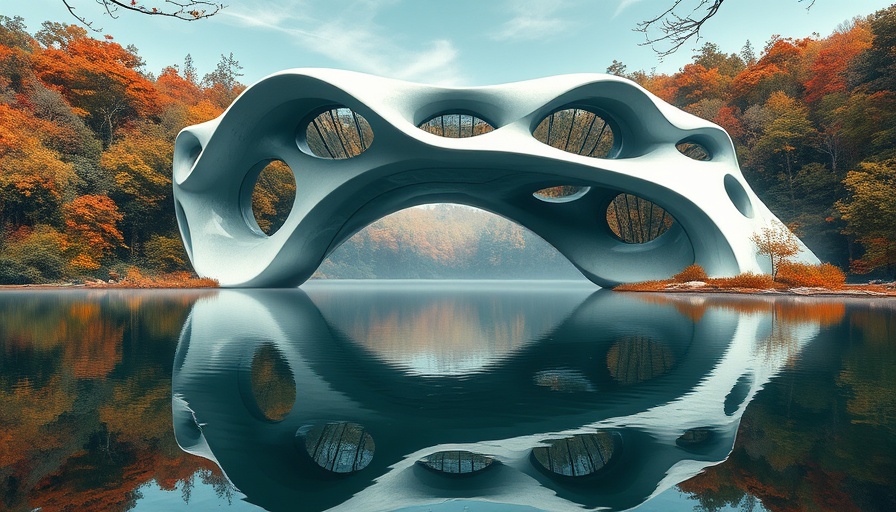
How AI is Transforming Architectural Imagination
Artificial intelligence (AI) has long been on the horizon of technological innovation, but its impact on architecture is now beginning to take shape in ways that challenge our conventional understanding of structure and design. The recent exhibition "Transductions" at Pratt Institute highlighted the collaborative potential of AI, bringing together over 30 architects eager to explore new frontiers in their field. This event serves as a testament to how AI can transition from merely a theoretical tool to a transformative force in architectural creation.
The Blend of Creativity and Technology
According to Karl Daubmann from Lawrence Technological University, AI tools like Midjourney and Stable Diffusion are leading to a synthetical output that appears both innovative and unprecedented. This creativity isn't derived solely from the technology itself; rather, it is fostered through the architects' skills and interpretations. The challenge now is integrating these new creative methods without compromising foundational architectural principles.
Tool vs. Job Displacement: The Architect's Perspective
While there is anxiety around the potential for AI to replace designers, many architects exhibit a more optimistic view. Jason Vigneri-Beane asserts that AI should be seen as a tool rather than a threat, echoing sentiments that technology has historically augmented the design process rather than negated it. This mindset underscores the idea that embracing AI can refine architectural vocabulary and enhance visual acuity, ultimately pushing the boundaries of built environments.
Theoretical vs. Practical Applications in Future Structures
Architecture exists at the intersection of artistic vision and practical implementation. The insights shared by architects at the exhibition indicate a growing trend toward utilizing AI for theoretical explorations, allowing architects to conceptualize and refine ideas that extend beyond traditional limitations. These explorations can potentially reshape how future buildings are designed and constructed, paving the way for innovative structures that leverage both creativity and advanced technology.
Conclusion: An Open Door to New Possibilities
The discussion surrounding AI in architecture is not just about enhancement. It's about embracing endless possibilities and redefining the role of architects in imagining spaces. By viewing AI as an empowering tool, architects can navigate this evolving landscape thoughtfully and creatively, enabling a future where the lines between technology and artistry continue to blur.
 Add Row
Add Row  Add
Add 




Write A Comment